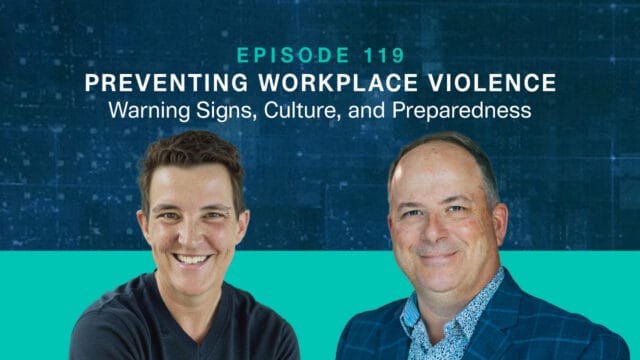
Can “Potential” Be Defined for PSIF Metrics?

In safety and risk management, few topics draw more debate than the idea of potential serious injuries and fatalities, or PSIF. This concept focuses on incidents that didn’t result in major harm but could have under different circumstances. As companies shift toward prevention-focused strategies, PSIF metrics are gaining ground. Still, their practical application remains complex.
What Exactly Is a PSIF?
A PSIF refers to any event or exposure that could have led to a serious injury or fatality. These aren’t just near misses. Instead, they are often routine tasks or hazards that carry an underestimated potential for catastrophic outcomes. Organizations track PSIFs to identify underlying risks before they cause harm.
Why Is Defining “Potential” So Difficult?
The challenge lies in how subjective the concept of “potential” is. Unlike hard data, such as incident rates or days away from work, PSIFs are shaped by perception. Two people might assess the same situation and come to very different conclusions about the severity of the risk.
This subjectivity complicates PSIF tracking. Without a clear and consistent definition, the metric risks becoming unreliable. A lack of alignment across teams, departments, or even entire companies can lead to inconsistent reporting and missed opportunities to prevent future harm.
The Subjective Nature of Risk
Personal experiences shape how workers see risk. For example, a veteran operator might downplay a hazard because they’ve done the task safely for years. Meanwhile, a new hire might flag the same situation as dangerous.
Cognitive biases also come into play. Optimism bias, or the belief that bad things happen to other people, can cause workers and leaders to underestimate threats. And when productivity is prioritized over safety, teams may underreport exposures to avoid delays.
Organizational culture has a major influence as well. Companies that emphasize open reporting and proactive hazard identification tend to spot more PSIFs. In contrast, workplaces with punitive or reactive cultures often miss these red flags entirely.
Organizational Risk Tolerance Varies
Different industries (and even different companies within the same sector) have very different tolerances for risk. For example, the aerospace and nuclear industries often take a zero-failure approach. These sectors use highly conservative safety models that treat every potential incident as critical.
On the other hand, startups or fast-paced manufacturing environments might accept more risk. Innovation and speed can sometimes outweigh conservative safety planning. In these contexts, PSIF tracking may be seen as too theoretical or resource intensive.
This variation means that one company’s “potentially serious” event might be another’s routine maintenance issue. Without industry-wide agreement, comparing PSIF data across organizations is difficult, and setting shared benchmarks becomes nearly impossible.
PSIF Forecasting is Not an Exact Science
Predicting which events qualify as PSIFs is far from easy. While historical data and risk matrices help, future events are shaped by unpredictable factors. Human error, equipment failure, weather conditions, and worksite dynamics can all contribute to a potential incident.
Furthermore, modeling human behavior is notoriously difficult. Stress, fatigue, distraction, and overconfidence all impact safety decisions, and not in predictable ways. Even with good data, it’s nearly impossible to assign precise probabilities to every possible outcome.
To account for this, many organizations use precautionary principles. They err on the side of caution when assessing potential harm. But this can lead to false positives, events flagged as dangerous that pose minimal real-world risk. On the flip side, real hazards may be missed because they don’t match expected patterns.
A Closer Look: Dynamic Risk Environments
Workplaces are constantly evolving, which complicates PSIF evaluation. New technologies, including automation, robotics, and AI, change the types of risks workers face. As human involvement decreases, system reliability becomes a top concern. A software glitch or cyberattack could have consequences just as serious as physical hazards.
The rise of remote work adds another layer. Workers at home or in decentralized environments face unique risks, from ergonomic injuries to cybersecurity threats. These don’t always show up in traditional hazard assessments but still carry potential for long-term harm.
External factors also shift the safety landscape. A natural disaster, supply chain disruption, or regulatory change can transform what was once a low-risk activity into a high-risk one overnight. That’s why PSIF programs must remain flexible and responsive.
How Can We Improve PSIF Identification?
Improving PSIF analysis starts with better tools. Technology now enables real-time risk tracking and pattern detection. Predictive analytics, AI, and machine learning can spot hidden trends in safety data that humans might overlook.
For example, sensors in machinery can detect wear and tear before it leads to failure. AI systems can analyze safety reports to identify emerging hazards. These innovations make it easier to detect potential risks early and take preventive action.
Collaboration also plays a critical role. When companies, regulators, and researchers share information, everyone benefits. Industry benchmarks and shared learning help standardize how PSIFs are defined and tracked.
Involving frontline workers in hazard identification is essential. Their firsthand knowledge helps ensure that data reflects real conditions. Training and engagement programs support a stronger safety culture and more accurate reporting.
What Makes “Potential” So Hard to Pin Down?
Several obstacles continue to hinder consistent PSIF evaluation:
- Hazard recognition varies: Workers’ knowledge, training, and experience influence what they report as risky.
- Environments are complex: Safety risks don’t exist in isolation. Often, they result from the interaction of multiple variables.
- Human behavior is unpredictable: Fear of retaliation, lack of awareness, or simple oversight can skew reporting.
- Data gaps exist: Without complete and timely data, PSIF tracking becomes guesswork.
- Hazards evolve: What seems manageable today might be dangerous tomorrow due to changes in tech, processes, or workforce dynamics.
These challenges highlight why defining a PSIF isn’t just about creating a checklist. It requires constant reflection and adaptation.
Taking a Multi-Lens Approach to Safety
Addressing the full scope of PSIF hazards requires a multidimensional strategy. One part of the equation is tech; tools like real-time monitoring and data analytics improve visibility. But people are equally important.
Organizations need to invest in safety leadership, employee education, and open reporting channels. Cross-functional teams should be involved in risk assessments. When departments work in silos, key risks often fall through the cracks.
An adaptive approach to safety is key. Systems should be flexible enough to respond to emerging threats, new technologies, and changing regulations. Regular audits, post-incident reviews, and risk recalibrations help keep PSIF frameworks relevant.
Is Focusing on PSIFs Worth the Effort?
The answer depends on your goals. For organizations committed to proactive safety, investing in PSIF tracking makes sense. Although it requires effort and judgment, the payoff is a deeper understanding of risk and more opportunities to intervene before harm occurs.
Companies that do this well often see reduced incident rates, improved safety culture, and stronger regulatory compliance. They also position themselves as leaders in their industries, showing a commitment to long-term workforce well-being.
Still, it’s important to acknowledge limitations. PSIF metrics should supplement, not replace other indicators. A balanced safety program includes leading and lagging data, both qualitative and quantitative measures.
Final Thoughts: PSIFs Are Only the Beginning
PSIF metrics are not perfect, but they offer a valuable lens for understanding what might happen, not just what already has. In risk management, this forward-looking view is critical.
To make the most of PSIF data, organizations must commit to continuous learning, cross-functional collaboration, and smart use of technology. Just as importantly, they must listen to their people: those closest to the work know where the real risks lie.
In the end, managing potential is about staying curious, staying alert, and never assuming that what didn’t happen won’t happen next time.
About the Author
James A. Junkin, MS, CSP, MSP, SMS, ASP, CSHO is the chief executive officer of Mariner-Gulf Consulting & Services, LLC and the chair of the Veriforce Strategic Advisory Board and the past chair of Professional Safety journal’s editorial review board. James is a member of the Advisory Board for the National Association of Safety Professionals (NASP). He is Columbia Southern University’s 2022 Safety Professional of the Year (Runner Up), a 2023 recipient of the National Association of Environmental Management’s (NAEM) 30 over 30 Award for excellence in the practice of occupational safety and health and sustainability, and the American Society of Safety Professionals (ASSP) 2024 Safety Professional of the Year for Training and Communications, and the recipient of the ASSP 2023-2024 Charles V. Culberson award. He is a much sought after master trainer, keynote speaker, podcaster of The Risk Matrix, and author of numerous articles concerning occupational safety and health.




